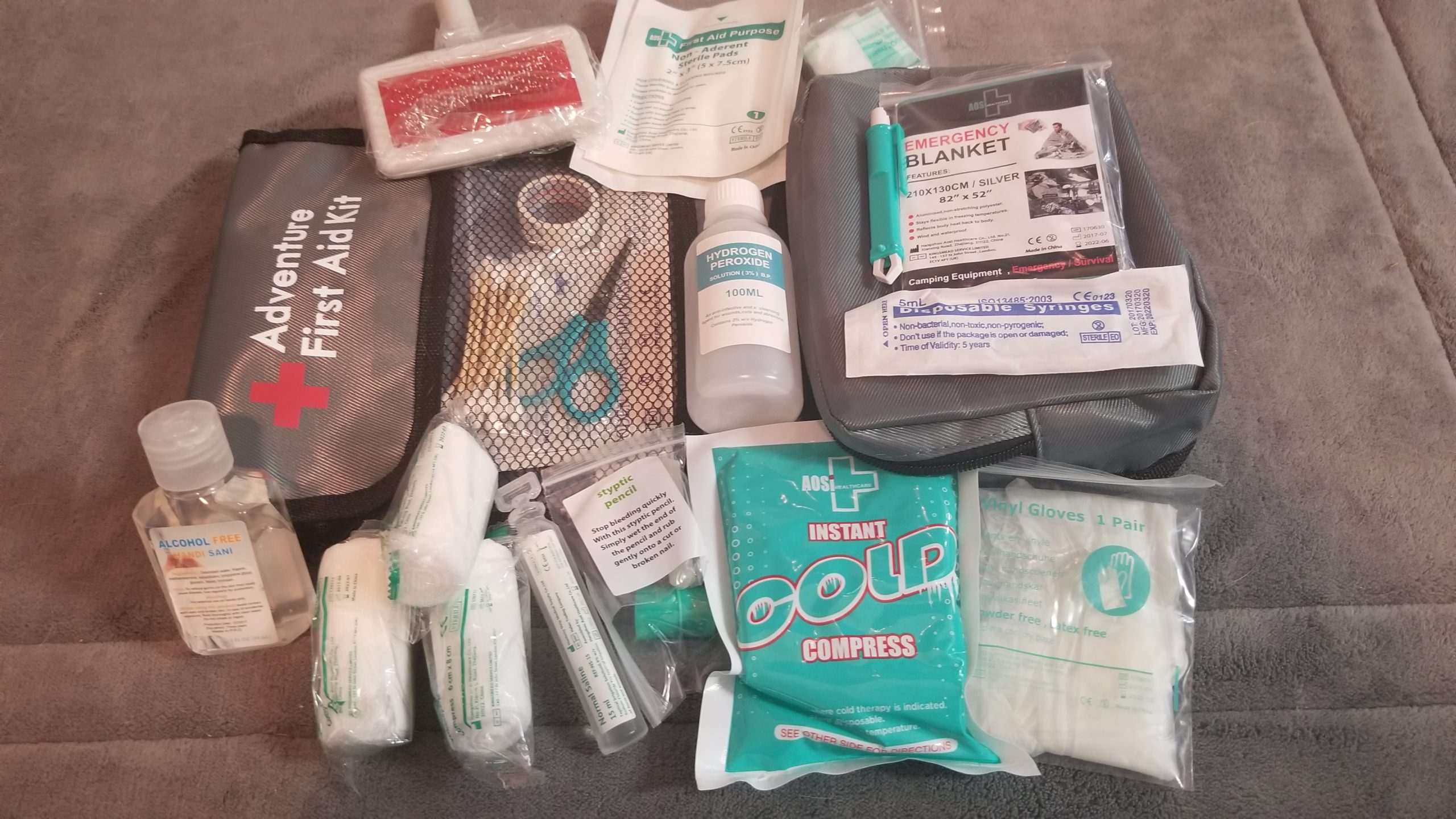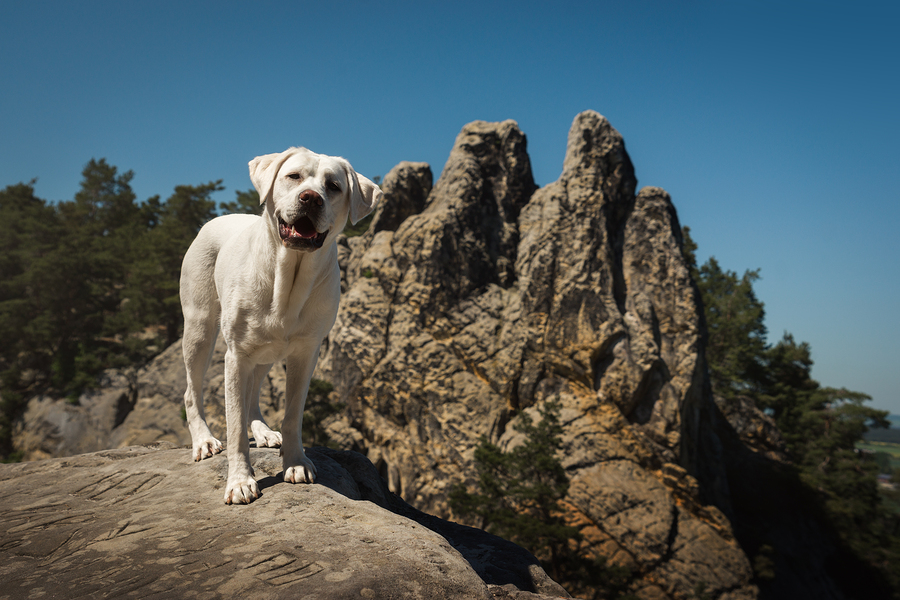As COVID-19 continues to keep doors to gyms and yoga studios shuttered, dogs are playing a more prominent role as workout buddies for people seeking safe ways to exercise outdoors.
Just ask my dogs, Kona and Bujeau. Since the “shelter in place” order was declared in mid-March, only an occasional rain shower has stopped us from our daily two-mile walks around our neighborhood in Dallas. We also engage in twice-a-day mini-fetching sessions in our fenced backyard.
But as a master certified pet first aid/CPR instructor who teaches veterinarian-approved classes, I know that dogs do not live inside protective bubbles. Lots of dangers lurk outdoors, coronavirus or no.
Let’s start with the itty-bitty dangerous duo: fleas and ticks. Unprotected, your dog can be attacked by fleas and ticks and develop anemia, Lyme disease, hot spots, flea allergy dermatitis, tapeworm, and more.
“One female flea that lands on your dog can lay up to 50 eggs a day,” says Michael Dryden, DVM, Ph.D., distinguished professor of veterinary parasitology at Kansas State University in Manhattan, KS. “Ticks are harder to kill than fleas. Even though ticks are not able to leap, jump or fly, they wait on shrubs, in the grass and bushes for an animal or person to pass by and grab on.”
Solution? Inspect your dog from head to tail after being outdoors. Be sure to look between toes and inside the lower lip of the mouth – two favorite hiding spots for ticks. Examine the lower back, tail, and muzzle – favorite places for fleas.
Get into the habit of providing flea and tick preventives year-round, no matter where you live.
“The new generation of flea and tick products are remarkable at the speed of killing fleas and ticks, but the key to controlling parasites is to use these preventives year-round on your dogs,” says Dr. Dryden.
Bees are busy pollinating flowers right now. Some dogs may be allergic to bee venom and risk going into anaphylactic shock if stung, especially in the muzzle or mouth.
Keep over-the-counter antihistamines in gel cap form in your vehicle and your home. Tape a safety pin on the outside of the package so you can quickly and easily puncture the gel cap and drip the diphenhydramine into your dog’s mouth if it starts to swell.
First, though, read the label carefully. Never give your dog any antihistamines that also contain acetaminophen. It can cause a toxic reaction in your dog. Also avoid products containing cherry flavoring meant for children. Stick with antihistamines that contain only one ingredient: diphenhydramine. Before giving, check with your veterinarian for the appropriate dose.
Walks in the neighborhood or to a nearby park may seem safe, but pay attention to weather – and your dog’s paws. On a 77-degree day, surface temperature on the sidewalk or asphalt is 125 degrees, a temperature that can trigger second-degree burns to paw pads within a few minutes of a dog staying in place. Dogs lack skin pores that people have, and they sweat through their paw pads. On a dry day, if you notice your dog is leaving wet paw marks on the sidewalk, he is showing signs of being overheated and could be suffering heatstroke.
Always bring bottled water and spare doggy poop bags on walks and hikes. If you forgot your dog’s water bowl, shape an unused doggy bag into a makeshift water bowl for your dog. In addition, you can help cool your dog by dipping his paws in this water bowl.
You can dab your dog’s belly with a cool, wet towel, but avoid draping the towel on him. The wet towel can trap body heat and act as a sauna, accelerating heatstroke.
 For long hikes, be prepared for possible limb injuries and bleeding paws. If you don’t have a first aid kit, include these items in your backpack: bubble wrap, popsicle sticks or emery boards and spare shoelaces or a bandana for limb injuries; a spare white sock and spare shoelace to use on a bloody paw; a spare six-foot nylon leash as a makeshift muzzle restraint to prevent your dog in pain from biting you; and if available, an inexpensive blue plastic Ikea shopping bag to serve as a gurney to transport your large dog back to your vehicle en route to the veterinary clinic.
For long hikes, be prepared for possible limb injuries and bleeding paws. If you don’t have a first aid kit, include these items in your backpack: bubble wrap, popsicle sticks or emery boards and spare shoelaces or a bandana for limb injuries; a spare white sock and spare shoelace to use on a bloody paw; a spare six-foot nylon leash as a makeshift muzzle restraint to prevent your dog in pain from biting you; and if available, an inexpensive blue plastic Ikea shopping bag to serve as a gurney to transport your large dog back to your vehicle en route to the veterinary clinic.
You and your dog may be aching to socialize with others, but for your safety, avoid public dog parks where dogs – and some people – may not be practicing the “stay six feet apart” action ordered by health officials. You risk being infected by the coronavirus and your dog risks being injured in a dog fight.
One safe option: book a playdate with your dog through SniffSpot, an app that brings together people with dog-safe properties and people looking for places their dogs can run safely off leash without escaping or getting attacked by another dog. Hosts offer backyards or other secure areas for nominal hourly rates, with a half-hour buffer between scheduled play times.
Adams launched the company in Seattle in February 2018 after his dog, Soba, was attacked by another dog in a dog park.
“It’s nice to see your dog get to run free, smell, mark and play with you without worrying about any safety issues,” says Adams. “Many people live in apartments with limited or no access to dog parks. SniffSpot is a safe alternative.”
This article was reviewed/edited by board-certified veterinary behaviorist Dr. Kenneth Martin and/or veterinary technician specialist in behavior Debbie Martin, LVT.








